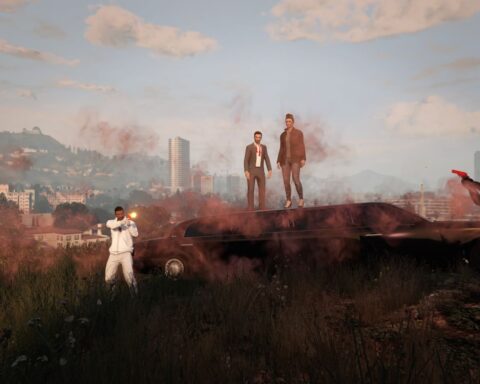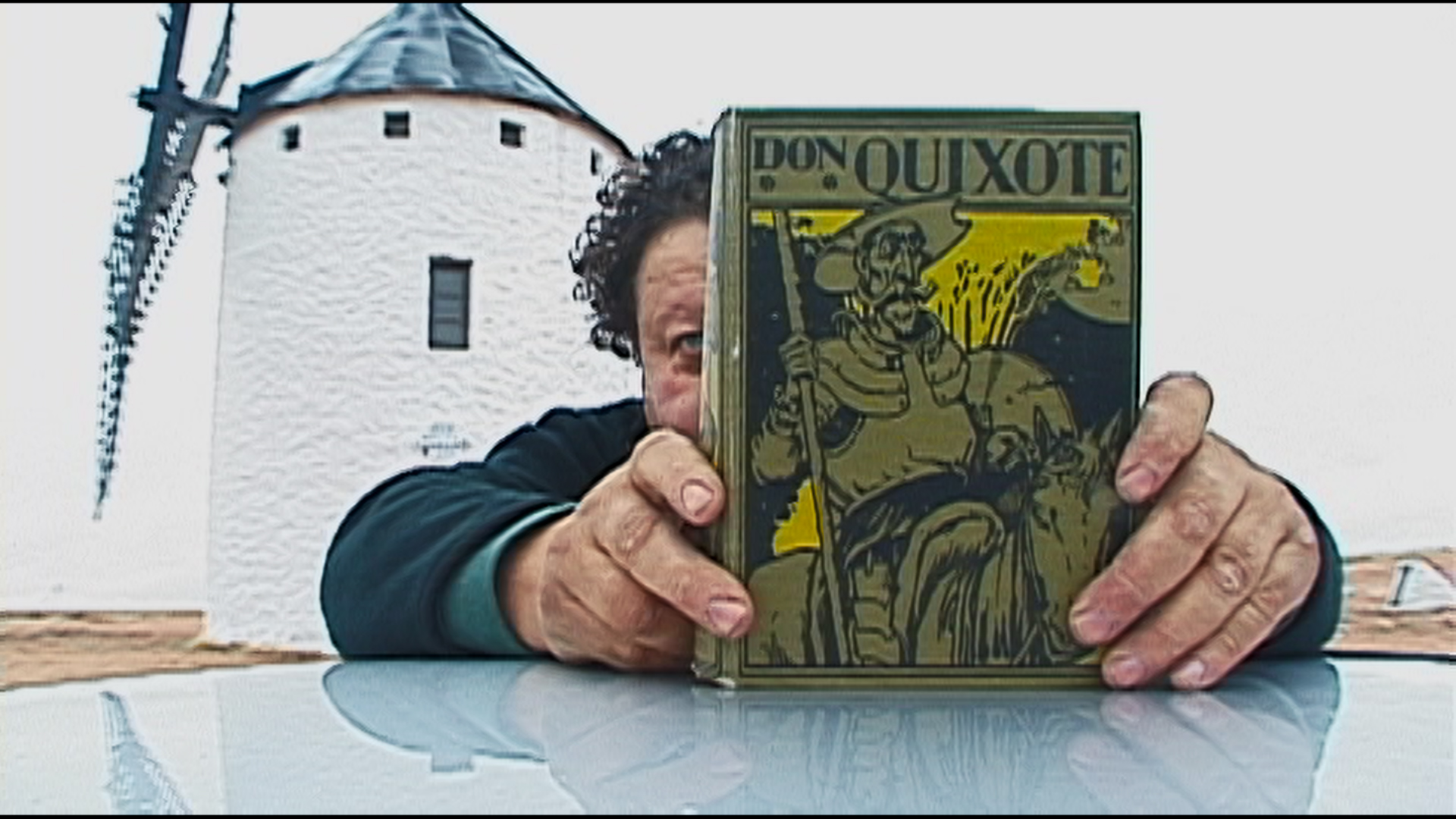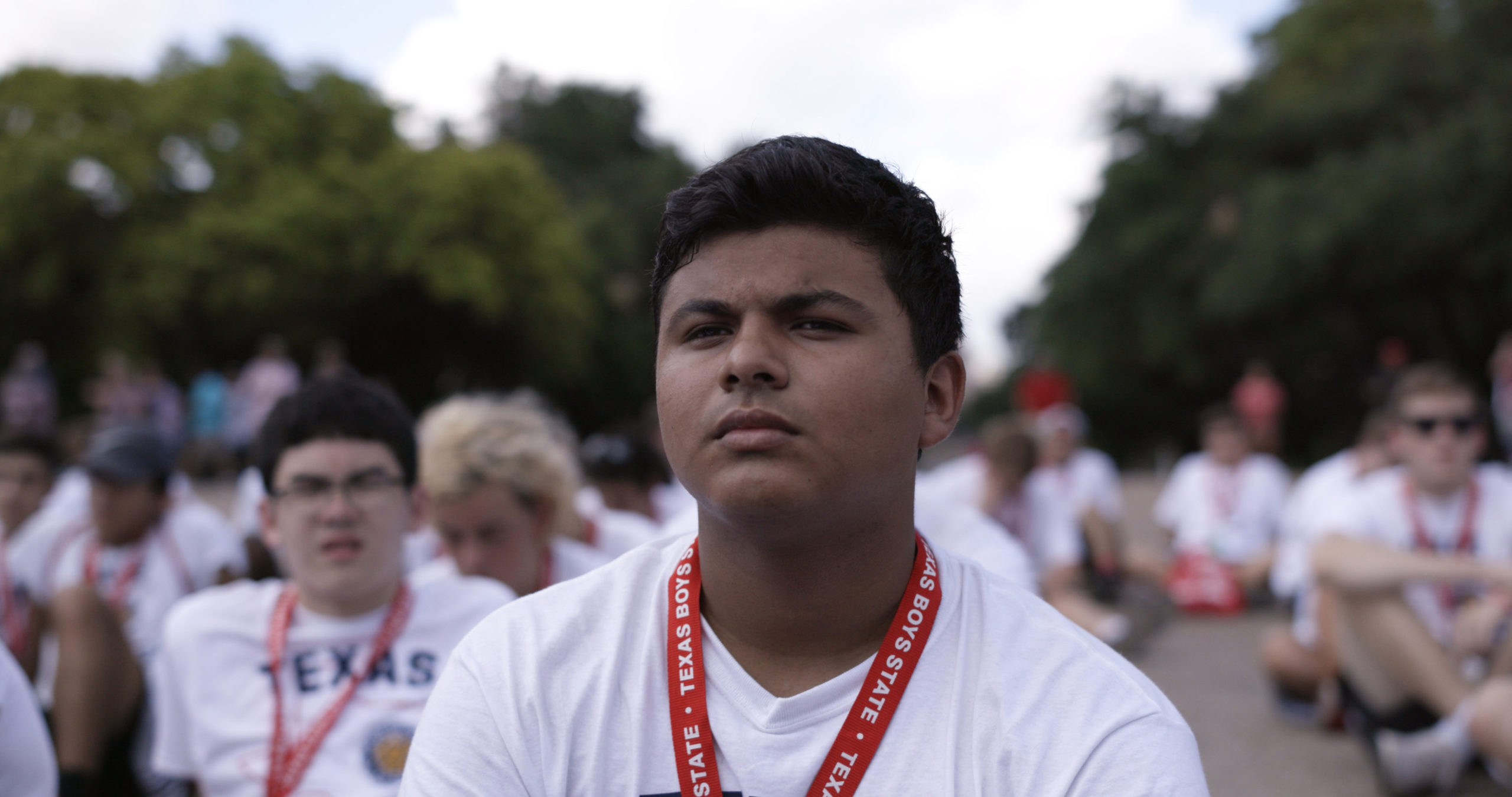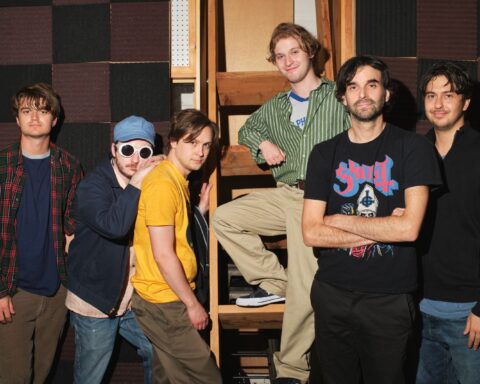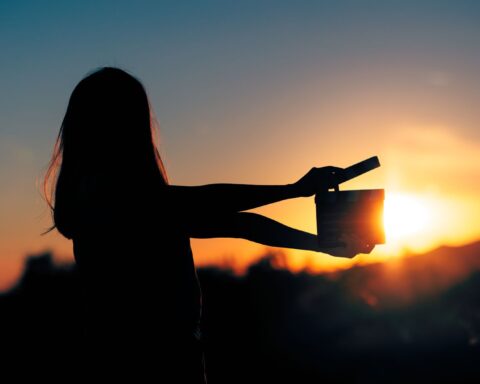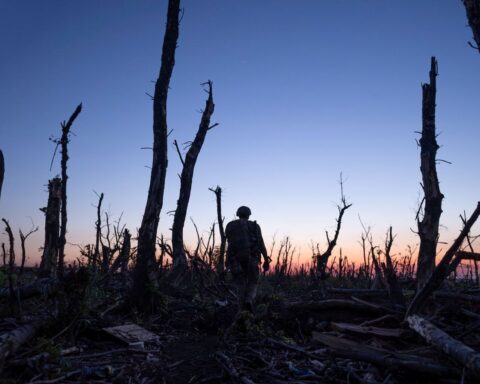Hot Docs 2020 was one of the first annual events to launch an online edition in response to COVID-19, and run it successfully. After offering a pre-festival slate of streamed docs broadcast in tandem with the CBC, Hot Docs presented its usual array of industry events, unabated and safe from the pandemic.
Naturally, the global virus and its impact on documentary moviemaking was a constant reference point during such virtual events as the Hot Docs Forum, Micro Meetings, and what it called Hangouts, meant as electronic replacements for the festival’s popular late afternoon get-togethers.
This year’s keynote address was delivered by Kenyan producer, director, and editor Sam Soko (Softie). Speaking from Africa and regretting he could not be in Toronto, Soko’s talk intended to encourage and inspire filmmakers facing the harsh realities of the virus. “We need to record moments, and store them in the museum of eternity,” he said. “We need to celebrate the heroes of this moment. We must all be guardians of freedom.”
Keeping filmmaking and its sociopolitical idealism alive was clearly a fitting message for Hot Docs, which promotes activism in its programming even as it takes care of doc-making business. The message had an urgency in a turbulent world where, Soko warned, the “pandemic not only threatens people’s health, it threatens civil liberties that were at risk long before COVID-19. This is not the time for us to stay quiet. Artists play a critical part in documenting history, and in being vehicles for social justice during a time when freedom is so precarious.”
In Kenya while shooting his film Softie, the intended opener for Hot Docs 2020, Soko endured guilt-tripping government officials who questioned subsidizing movies, arguing the cash should go to essential workers like nurses. “Who needs art in the time like this,?” a newspaper headline shrieked. Financing artists is a “shocking waste of funds.” Soko’s response: “There is no time in history when art becomes more important than during a time of crisis.”
Softie depicts a talented photographer and activist who runs for office in a country where political dissenters and truth-telling journalists “can be jailed up to five years if they fail to correct what government deems to be incorrect,” the keynote speaker said. “People in Kenya are arrested often violently. All this is happening when some leaders are using their podium to spread disinformation.”
Little did Soko and other participants know that an international uprising against racial oppression was on the horizon, triggered by the 21st century version of lynching. “Whatever our new normal might be,” Soko concluded, “we will continue doing our work and pushing our ideas forward.”
Following the keynote address, a Hot Docs panel discussed hurdles that shot up when the deadliness of the virus outbreak became clear. Moderated by Julie Goldman of Motto Productions, the participants recounted stories about what they were up to when the pandemic hit and they had to suspend or shut down productions. Some decisions were made on ethical grounds before there was any legal obligations.
The panelists focused on what Goldman called the “tools to continue work,” which need to be improvised according to a variety of unpredictable situations and uncertainties. Filmmakers must be “responsible and agile,” she said. How does production continue at all, what with the necessity of social distancing, the inability to travel and so on? Solutions offered including having subjects of docs self-film using iPhones while being directed remotely or having two DPs distanced from each other in separate cars providing safe but professional shoots. Stripped down crews are clearly obligatory. Rebecca Barry of Australia’s Media Stockade was engaged in shooting the first four episodes of a series when COVID hit. Barry who “chased around the country” with her crew, emphasized “avoiding ridiculous risks.”
Among other activities, Michèle Stephenson, of the Rada Film Group, was getting ready for a screening at the Tribeca Festival and “pivoted to a special on COVID.” Ric Esther Bienstock (Good Soup Productions) who had made a film about the Ebola crisis, laughingly referred to herself as the go-to “virus lady.” She pointed out that COVID is not at all like Ebola; it’s much harder to manage.
Alex Hryniewicz (Australia’s Little Dot Studios) came out of a two week quarantine, and like everyone else tried to figure out what to do next. For Hryniewicz, filmmakers must think beyond the pandemic. Future audiences will be fed up hearing about it and tired of watching Zoomified images of people. He also brought up a pandemic plus: so many people are not leaving their homes, viewership has shot up.
The industry centerpiece of the festival is the Hot Docs Forum, which normally runs for two days in a baronial hall on the University of Toronto campus. Filmmakers seeking production money, broadcasters, and distributors pitch their projects to an array of industry people from different countries. At the 2020 virtual fest, “decision makers” heard about 22 projects. The pitches and reactions to them did not stream live, but nineteen were recorded and made available on the Doc Shop platform.
Hot Docs Forum
Industry veterans Catherine Olsen and Simon Kilmurry moderated the Forum, which followed the same rules as the in person event: seven minutes to talk up the idea and screen video, eight minutes of response. An old Hollywood dictum says that when a deal is completed long distance, moviemakers need to fly to L.A. for eye contact and flesh pressing. Naturally, many of the participants in the Forum regretted the absence of human contact. Via Zoom, they saw and heard each other as thumbnail images on a collective screen, alternating with closeups of whoever had the floor, so to speak.
The crew shot remotely from various angles, allowing for filmmaker reaction shots as they were praised or critiqued. Typical of the new normal for much visual media from CNN to the CBC, Zoomed talking heads spoke from offices, living rooms, and dens as one wondered about their home decorating choices and the titles of the books in the background. Some like Noland Walker of PBS ITVS seemed to be trying for an effect, apparently keying himself over an image of the Golden Gate Bridge, or maybe just sitting in front of a poster.
The Zooming that’s now dominating human communication evokes a Brave New World where human encounter is electronic: faces on screens, replicants of actual people. At this Industry Forum, there were no lunch breaks on the lawn, no schmoozing, no hooking up for whatever purpose.
At the same time, the Virtual Forum, mostly glitch free during the pitches I watched, offered sharper focus on the verbal presentations, often seamlessly integrated with trailers and sizzle reels. You didn’t have to crane your neck at a screen at the end of the conference room. You weren’t distracted by gum chewers, people checking their watches, and fidgeting in their chairs, not to mention odors emanating from Birkenstocked feet. Some filmmakers, like Anjali Nayar and Mbithi Masya, were clearly inspired to come up with a vibrant trailer that met the “challenge of pitching virtually.”
Familiar types of evaluations came from the distributors, commissioning editors, broadcasters, and film festival reps beaming in from around the world. Your movie will work well in Scandinavia, or it won’t. I love the idea, but what is this character doing in the present tense? Are you sure you’re not exploiting the subject? We do a lot of crime films/don’t do crime, so we are/aren’t interested. They asked questions about the material, the structure, and looked forward to scheduled meetings.
The Forum’s selection committee found a wide array of projects in various stages of development. Most of them clicked in one way or another with the dealmakers. Just a Band, the Nayar/Masaya project and a Kenyan-Canadian production, promises to be an exuberantly colourful doc about an Afro Eclectic pop band that made a video which went viral. Dreaming Walls, from partners in Belgium, the Netherlands, France, and the USA looks at New York’s legendary Chelsea Hotel as it transforms into yet another boutique location. Director Amélie van Elmbt focuses on aging artists from the hotel’s heyday as a bohemian enclave as they put up with the racket of constant renovation and worry about their future.
Kinga Michalska’s Energylandia drew intrigued responses. A Canadian production, produced by Montreal’s Katarina Soukup, the film depicts the biggest amusement park in Europe, Energylandia, which is near the Auschwitz Death Camp. Michalska and Soukup explained how their story explores the history of holocaust denial in Poland and the awakening to reality. Jane Jankovic of TVO and Sandra Kleinfeld of the CBC were particularly interested, Kleinfeld pointing out that CBC viewers “can’t get enough” of Holocaust films.
Another burgeoning project, the Chilean Film Alien Island fuses a strand about UFOs with the story of disappearances during the Pinochet dictatorship. Director Cristóbal Valenzuela Berríos and producer by Diego Breit-Lira effectively used visuals and sound to give the project a sci-fi feel. Deal-makers like Rudy Buttignol of Knowledge Network expressed interest in the political aspects of the story.
In a totally different zone, the American project Commuted recalls the misadventure of a woman whose abusive husband lured her into the drug trade. After years in prison as a supposed drug kingpin, she was finally released and is now an activist fighting for prisoner rights. As with other projects, interlocutors like the BBC wanted to know from director Nailah Jefferson and producer Darcy McKinnon if the project had a dramatic structure and wasn’t all back story.
Other US projects included Driver about a woman trucker and activist fighting sexual assault and Bella, which deals with online sexual deviance. Director Nesa Azimi and producers Kellen Quinn and Elise McCave argued in their pitch that Driver is particularly relevant because trucking is an essential service during the pandemic. Kristin Feeley of the Sundance Institute bought into the film, saying it “absolutely works” for her.
Similarly, directors Bella Graves and Adam Dietrich (they’re a couple), with their producers Susan Bedusa and Douglas Tirola, pointed out that during a global pandemic so many people are living online, the kind of social media assault Graves endured when she was thirteen must be rampant. “Friends” sent pedophiles over to her house to rape her.
The Danish/American offering The Roulette Project had one of the strongest hooks during the Forum. Directed by Pernille Rose Grønkjær, produced by Sigrid Dyekjær and Julie Goldman, the film portrays two physicists, boyhood friends, who decide to free themselves financially by using chaos theory and an avant-garde wireless computer system to make a fortune in Las Vegas, and then move onto Wall Street. The slick pitch with its accomplished visuals hit home.
Of all the pitches I followed, the piece de resistance of 2020 was Speak no Evil. From Canada and the USA, directed by Jason Lapeyre, and produced by the director, Priscilla Galves, and Ben Braun, the doc recounts the story of a mute black man who was accused of murder and defended by America’s only deaf lawyer. Long ago told as TV movie, the film would highlight dramatic recreations in 16mm, which still need to be shot, While one observer said the finished film could obfuscate reality, another gushed, “It has everything,” the magic words every filmmaker craves at the Hot Docs Forum.
Speak No Evil – Concept Trailer from Jason Lapeyre on Vimeo.
Hangouts and Brown Girls Doc Mafia
Dropping into some of the live Hangout sessions, which replaced the Hot Docs’ afternoon tent schmoozes, I didn’t expect glasses of Pinot Grigio and enticing munchies to pop out of my laptop, but I did anticipate interaction with the participants I could see and hear on my screen. There was some, but overall the three Hangouts I linked to were primarily information sessions with few opportunities to connect with the other thumbnails.
The Brown Girls Doc Mafia session was, the festival announced, about how “non-binary filmmakers of colour” were moving forward on projects during the pandemic. Moderated by Cassandra Jabola, the gathering featured Jasmin López now developing a film about child abuse; Lagueria Davis working on a personal telling of the Black Barbie story; Nesa Azimi, who pitched her doc about a female truck driver in the Forum; and Emily Cohen Ibañez, dealing with power issues via a film about a strawberry field worker in Oxnard California.
“How do you navigate a space that wasn’t built for women of colour before, during, and after COVID?”, Davis asked. “Representation is about having a seat at the table, being in the room.” Davis talked about her aunt who for years argued for a Black Barbie until finally her wish came true. The filmmaker was happy to find the Brown Girls Doc group, which understood the story she wanted to tell and validated it. For Davis, the goal for any minority person is “not just being a token, or a part of affirmative action.” Recognition should be about talent and the quality of work that gets done.
Coincidentally, while writing the above in the aftermath of George Floyd’s murder, I read that in a prestigious US school, a Black Barbie was found with a miniature noose around its neck.
Hangout presenter Jasmin López, a victim of child sex abuse, explained that she intended her doc’s purpose to go beyond the film itself: the budget includes therapy for participants. During a brief break for a scheduled interaction, I enabled my mic and asked a couple of the Mafia girls about the aesthetics of their activist docs, and the danger of characters being little more than emblems for an issue. Davis outlined her three act structure, the iterations of her grandmother, past present, future. The Black Barbie story, she added, will deploy miniature sets, animation, and so on. Cohen Ibañez said that she thinks about aesthetic concerns like colour and soundscape.
Podcasting during COVID
The Hangout “Can I Podcast at Home?” had an obvious relevance during COVID times. Like the other Hangouts, this one invited about 20 people into the Zoom room. They watched from home locations ranging from small town Vermont to Canada to Azerbaijan. I wanted to crack a joke about my surname, which is the family name of the authoritarian family that runs Azerbaijan, but as in other Hangouts, I couldn’t yack the way one could at the festival’s daily get-togethers.
The event focused on Yasmine Mathurin, former CBC podcast producer and currently freelance multimedia artist. Mathurin loves podcasts because they allow her to “forget that the world is on fire. I can transport myself into somebody else’s world in a moment where we are trying to find connection.” Moreover, radio is much cheaper than making movies.
During the session, Mathurin talked about translating the evocative use of sound in moviemaking to podcast production, for example opening a film scene with a door opening. “The most engaging kind of radio stories are the stories that pull you right into those moments,” she said. “You use the listener’s imagination to paint the picture that you want them to see, and everybody’s interpretation of the story is different.” When Mathurin listened to the celebrated podcast Serial, “I would imagine Adam Syed’s house, how he was when he was in jail. Those things are so unique to podcasting.”
In an effective podcast, Mathurin continued, “Texture is important, how close or how far you are, the details in the room. You want to hear the hum of the fridge or the water tap.” When I asked about classic radio sound effects, the kind that inspired filmmakers like Terry Gilliam when they were children, she said they’re “a great way to highlight or underscore a story,” but it depends on “the story you’re telling.”
Naturally, Mathurin advises finding narratives that stand out “from the sea of stories.” A podcast, she added, is taking moments from a person’s life and structuring it into a beginning middle and end. And the “general rule is that you want reveal something new” at intervals. In the search for stories, a podcast-maker could adapt a true account into an episode. The Farewell, a comedy-drama film festival favourite, was based on a podcast that aired on Ira Glass’s This American Life, one of Mathurin’s favourites. A fine podcast I would add as innovative and memorable is Canadian-raised Glass collaborator Jonathan Goldstein’s Heavyweight, his follow-up to the hilarious CBC-Radio show WireTap.
In Canada, Mathurin said, not that much heavy financing is available for podcasting other than the CBC. Entities coming into Canada, Spotify for example, are looking for pitches. Podcast equipment is very simple, Mathurin pointed out. She uses a Zoom recorder with ports for two mics and the built-in mics for room tone and ambiance. A few days after the Hangout, she posted a list of resources that take into account producing a show during Corona.
Rough Cuts
The third live Hangout session I zoomed in on, “Rough Cut Services at Home”, offered former commissioning editor Iikka Vehkalahti explaining the post-production service he and partners created to aid filmmakers who are struggling to create a fine cut. RoughCutService is widely known in Europe but far less so in North America. Via Skype, Zoom, and video links, doc-makers can benefit from sophisticated editing advice without leaving home.
Vehkalahti argues that even if filmmakers have editing skills, they usually need professional outside opinion. Friends and relatives know too much about intentions and are swayed by affection. Commissioning editors and broadcasters have an agenda.
A group of 14 people, RoughCutService was established, Vehkalahti said, because he and his colleagues were constantly being asked to look at people’s films and give their opinion. Unable to continue travelling from location to location, they decided to build an online service. “We could see the potential for really strong films,” Vehkalahti recalled, “but sometimes for different reasons, the material was not shaped into the final form.”
RoughCutService advisors must be able to “communicate with people from different cultures and backgrounds,” orally and in writing. Filmmakers who sign up and pay the fees get their cut scrutinized by two professional editors from diverse cultures with different priorities, for example narrative and conceptual. Interested filmmakers may access submission information on their website.
Micro Meetings
The Hot Docs 2020 Micro Meetings relayed Corona sensitive project submission information from three of Canada’s leading broadcasters: the CBC, TV-Ontario, and Bell-Media’s Crave. Representing the CBC’s numerous strands were Sandra Kleinfeld, Senior Director, Docs, CBC Docs, and the Documentary Channel; Jordana Ross, Production Executive, Documentary Channel; Don Spandier, Executive Producer, The Passionate Eye; Lesley Birchard, Executive in Charge of Production, CBC Docs; Charlotte Engel, Executive in Charge of Production, CBC Docs POV; and Sue Dando, the Science & Nature Strand, The Nature of Things. The latter show is currently celebrating its 60th anniversary.
When the virus hit, “Everything came to a halt,” Kleinfeld said, and she has no idea what “normal will be” in the future. However, the CBC moved on launching HotDocs at Home, seven Doc Channel films that would’ve premiered at the festival. The films broadcast on the regular network and played Gem, the network’s streaming platform. The CBC also initiated the Creative Relief Fund, which backed projects about COVID–19 experiences.
Jordana Ross ran through the Documentary Channel’s mandate and protocols. It prioritizes Canadian films in English for audiences that have very little tolerance for foreign languages. The channel does 16 to 18 character driven features per year, taking a six-year license.
Charlotte Engel explained that her strand’s choices run on the CBC and on Gem. Foreign content is acceptable, but there must be Canadian threads. Engel emphasized that the POV films should take viewers on a journey, with an active story that needs to be both relevant and have shelf life. Filmmakers normally pitch active stories about diverse characters with a five page outline. Budgets are $400,000 to $500,000; The Rogers Group of Funds and the Canada Media Fund figure in the funding process,
Sue Dando said that The Nature of Things commissions about 18 films per year, and sometimes participates in international co- pros. The show hopes to pick up production when travel restrictions are relaxed, and Dando recognizes that production values will drop while the epidemic keeps flaring. An interesting alternative to normal production was The Bee’s Diary, shot just outside the cameraman’s home in his backyard and focusing on one bee. One wonders how that works. The bee waits in its trailer until the day’s first shoot begins?
Lesley Birchard explained that CBC sanctioned shorts that play on YouTube and Gem. They are usually about 40-minutes long, character driven, active, and unfolding, stories viewers want to share. Don Spandier, who handles the network’s The Passionate Eye, which is a curated playlist of international documentaries the CBC acquired, sometimes pre-buying, stories that are domestic with an international scope, for example, the film on Amazon. The show focuses on the news and current events. But some stories are just too great to resist, including the “evergreen” ones. Questions arose about what audiences will want if and when life begin to normalize. Chances are high that audiences will be fed up with COVID stories by next year.
In a rapid-fire presentation, Jane Jankovic, Commissioning Editor and producer for TVOntario covered all the salient information about the educational outlet’s involvement in documentary. TVO commissions many films, but the numbers could drop this year because of COVID-19. At the moment, there are 20 films in limbo. Moviemakers face obvious problems covering big events, travelling, and following intimate stories demanding people in close proximity. It’s vital to take into account the comfort levels of crews.
Jankovic explained that TVO demands Canadian content (with a preference for Ontario) in subject matter and filmmakers. Some treaty co-pros get signed, but they are demanding and time-consuming. TVO goes for one-offs (preferably one hour in length), and limited series. Preferred genres are point-of-view docs, current affairs, and some essay films. TVO’s “sweet spot” is contemporary special issue films with characters telling the story, rather than narration.
Budgets average from “400-500K for one-offs,” Jankovic continued. The channel does some pre-buys, short videos, and podcasts. “Modest” digital media projects promote docs. Pitchers should send TVO an email with a one pager, maybe a link to a demo or an event. If interested, TVO will ask for a treatment and more information.
Crave TV’s Tina Apostolopoulos, Production Executive, Original Programming, Factual and Reality, explained that the channel works with indie producers, filmmakers, and platforms various outlets like HBO. Crave originals run the “gamut of subject matter,” she said; there is no subject ”bucket.”
Current projects are a follow-up to the classic doc The Corporation, and A-I Gods, an examination of digital immortality. Once Were Brothers, the music film about The Band that opened the 2019 Toronto International Film Festival met Crave’s goals of “making noise” and moving people. What cuts through? “Iconic characters,” said Apostolopoulos, not politics. Projects should “resonate with Canadians. ”Crave is interested in innovative approaches from both new voices and “distinguished voices.”
Apostolopoulos pointed out that Crave works collaboratively from outset to all the way through. The outlet is always open to pitches, but there are many competitors. Doc-makers should submit a one-pager, “a little bit that’s been shot; a lot shot, sizzles.”
In 2020, in the midst of one the worst health crises ever to assault the modern world, Hot Docs was one of the first film festivals to come through with a full slate of films and a wide range of industry events, all online. It came through surprisingly well. But as many participants said, hopefully festivals without face-to-face human contact are only a temporary measure and we’ll be back to attending them next year.





